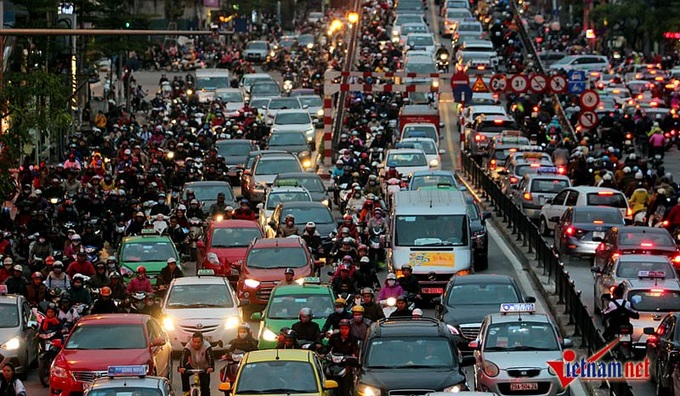 |
| Traffic congestion in Tay Son Street. Photo by Vietnamnet. |
According to Ngo Manh Tuan, deputy director of the city’s Department of Transport, none of the entries warranted first prize, so the organisers decided to grant the second prize worth USD100,000 for a Japan-Vietnam partnership which consisted of the Nikken Sekkei Civil Engineering Ltd. and Nikken Sekkei Research Institute and Vietnam Institute for Urban and Rural Planning.
Meanwhile, the five remaining finalists received USD25,000 each, Tuan added.
A representative of the Department of Transport said the winner offered seven solutions to deal with congestion.
Firstly, traffic network must be developed along with urban expansion. Secondly, the traffic network should also be renovated and adjusted to east congestion spots.
Thirdly, public transportation development is a must, especially rapid bus transit and urban railway systems. Simultaneously, there should be solution to encourage citizens to use more public transport.
The proposed fifth solution is to have strict management and regulations to deal with violators and to prevent congestion.
Next, Hanoi should follow a transit-oriented development model, a type of urban development that maximises the amount of residential, business and entertainment locations within walking distance of public transport.
Finally, the authorities must have short-term and long-term plans to link and effectively implement the proposed solutions.
Earlier, the city launched the contest to seek solutions from the public to deal with its traffic congestion by 2025 with a vision to 2030. The first prize will be USD200,000 and the second prize will be USD100,000.
Chairman of the municipal People’s Committee Nguyen Duc Chung led the board of examiners for the contest which also includes 13 other city leaders.
Traffic jams are estimated to cause average annual loss of around VND12.8 trillion (USD600 million) for Hanoi, said Nguyen Phi Thuong, Chairman of Transport Corporation Hanoi. He added that private vehicles were among the main reasons leading to the city’s more serious air pollution and congestion.
Statistics showed that up to 16,000 new motorbikes and 500 new cars are registered in the city every month. By late January this year, Hanoi had more than 5.5 million personal vehicles, including early 500,000 cars and more than five million motorcycles. The numbers are expected to increase to more than 7.3 million motorbikes and 1.3 million cars by 2025.
